Orlando, Florida, a city now synonymous with world-class entertainment and vibrant city life, owes a significant part of its downtown renaissance to the vision of one man: Bob Snow. His story, intrinsically linked to the famed Church Street Station, is a tale of passion for a bygone era, Dixieland jazz, and a determined spirit that transformed a neglected part of the city into a thriving entertainment hub. Stepping into Snow’s historic Orlando home, filled with antique charm and echoing with stories of the past, it’s clear you’re in the presence of someone who cherishes history and has a knack for creating memorable experiences.
Architectural historian Christine Madrid French, Whitney Broadaway from the History Center, and I visited Bob Snow to delve into the origins of Church Street Station. As a former member of the “Good Time Gang,” the affectionate nickname for employees of Church Street Station, I was already familiar with the legendary tales surrounding Rosie O’Grady’s in Orlando and its founder. Our mission was to explore the pivotal events of the 1970s that shaped Central Florida, with Church Street Station at the heart of this transformative period.
The Dixieland Dream: From Pensacola to Orlando
“It’s amazing how things work out when you don’t have any money,” Bob Snow mused, reflecting on the humble beginnings of his entertainment empire. His first venture, Rosie O’Grady’s in Pensacola, opened in 1967, funded by the sale of his Porsche and his final Navy pilot paycheck. Snow, a talented Dixieland trumpet player himself, handpicked eight of the “best Dixieland players in the world” to create the infectious, high-energy atmosphere that defined his “Good Time Emporium.” The opening night in Pensacola was a testament to his bootstrap approach – waitresses had to contribute their own cash to fill the registers and provide change.
Snow’s concept was deeply rooted in his admiration for a past era. “I love Dixieland jazz,” he explained, “I love the lifestyle, I love the airplanes, I love the skywriting, I love the biplanes, I love the clothes, I love the culture, I love the buildings, I love the artwork.” This passion for a romanticized past was the driving force behind both Pensacola’s Rosie O’Grady’s and, later, Church Street Station. Nearly half a century later, the good times are still rolling at Rosie O’Grady’s in Pensacola’s Seville Quarter, a testament to the enduring appeal of Snow’s vision.
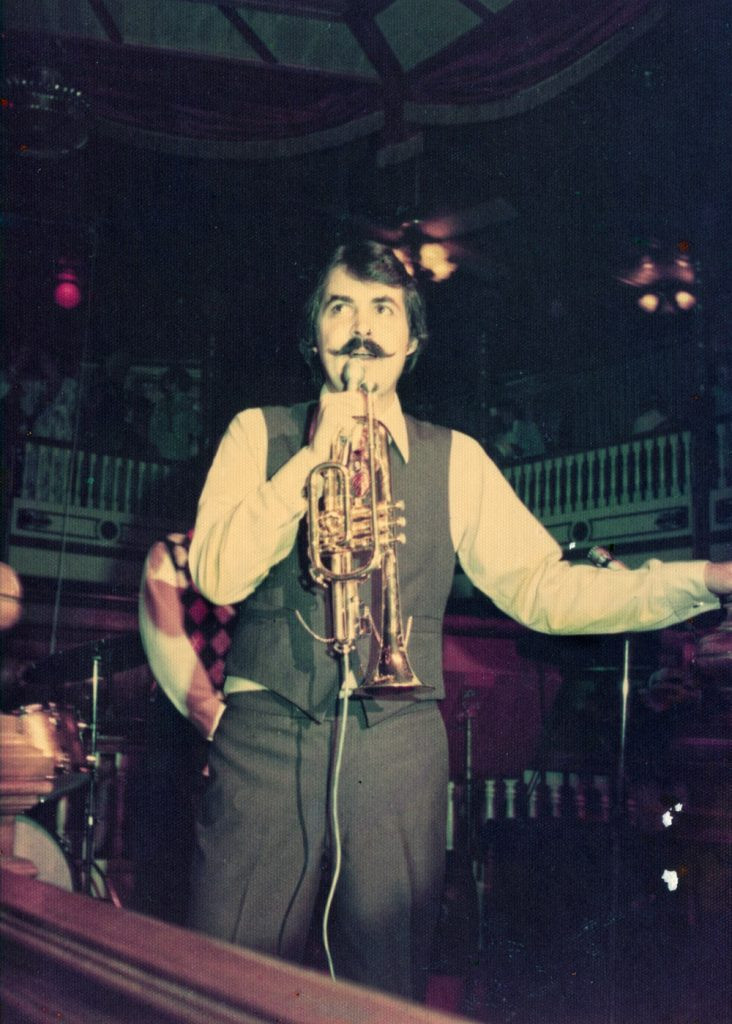 Bob Snow in his historic Orlando home, reflecting on the legacy of Church Street Station
Bob Snow in his historic Orlando home, reflecting on the legacy of Church Street Station
Serendipity and a Railroad Station: The Orlando Vision Takes Shape
The story of how Bob Snow arrived in Orlando is a blend of chance and destiny. “I was up buying a T-6, which is a big skywriting airplane… used as a fighter trainer in World War II,” Snow recounted, leading us to the pivotal moment that brought Church Street Station into existence. Negotiating the airplane purchase with aviation pioneer Harley Mansfield in Massachusetts, a winter snowstorm unexpectedly grounded him. This delay turned into a unique opportunity: Snow spent three days learning the art of skywriting from one of the “last skywriters in the world,” a poignant memory as Mansfield passed away just weeks later.
Flying the newly acquired T-6 back to Pensacola, Snow encountered the same weather system that had initially grounded him. Forced to divert to Orlando, this detour led to a chance reconnection with a former Marine aviator and Dixieland enthusiast who urged Snow to consider opening a Rosie O’Grady’s in Central Florida. After two days of fruitless location scouting, fate intervened during a taxi ride to the airport. Snow, inquiring about Orlando’s historical landmarks, received a casual suggestion from the cab driver: “We’ve got an old railroad station” on Church Street.
Despite being near the airport and ready to leave, Snow insisted on turning back to explore this historic railroad depot. What he discovered was a Victorian-era building, the Church Street Station, which had opened in 1890 but had been inactive as a passenger station since the 1920s. Although time and modifications had taken their toll, Snow recognized the inherent potential. Instructing the cab driver to “keep the meter running,” he began to explore. “I looked down the street and saw Bumby Hardware, and it was a Salvation Army,” he remembered. “I looked in every window and walked around that area – I left the meter running for an hour and a half, and the cabbie says, ‘I hope you’re good for this,’ and I said, ‘Mister, you’ve been more help than you’ll ever know.’ ”
Recognizing the untapped potential within the “bones” of Church Street’s once-bustling commercial district, Snow immediately began formulating a plan to replicate the success of his Pensacola venture, setting the stage for the birth of Church Street Station in Orlando.
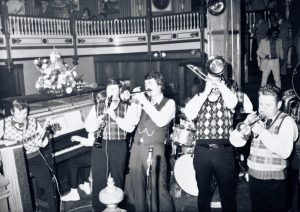 Dixieland jazz band performing, embodying the spirit of Church Street Station
Dixieland jazz band performing, embodying the spirit of Church Street Station
Building a “Good Time Emporium” on Church Street
Turning his vision into reality required resourcefulness and determination. To finance his Orlando project, Snow took a night job flying mail across Florida in a vintage Beech-18 airplane, commuting between Pensacola, Fort Walton Beach, Jacksonville, and Orlando. This demanding schedule allowed him to dedicate his mornings to building his downtown Orlando dream. Church Street Station began just west of the historic depot, in the former Slemons Department Store and Orlando Hotel building, which Snow rented for a mere $250 per month. On July 24, 1974, Rosie’s O’Grady’s Good Time Emporium opened its doors, igniting the revitalization of Orlando’s then-aging downtown core.
Snow emphasized the crucial role of local support in the success of Rosie’s in both Pensacola and Orlando. While tourists were a significant part of the visitor base, he estimated that locals, accounting for about 35 percent of the business, “are what gave us credibility.” Orlando residents filled in during slower tourist seasons, and word-of-mouth recommendations from locals were instrumental in establishing Rosie’s reputation. Building on this initial success, Snow expanded Church Street Station, adding Apple Annie’s Courtyard in 1976, Lili Marlene’s Aviator’s Pub and Restaurant in 1977, and Phineas Phogg’s Balloon Works in 1978, before further developing the south side of Church Street.
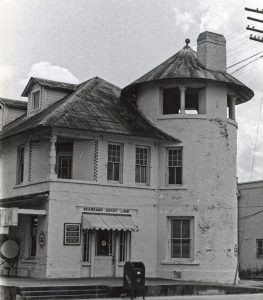 Historic Railroad Depot on Church Street, the cornerstone of Church Street Station's development
Historic Railroad Depot on Church Street, the cornerstone of Church Street Station's development
Church Street Station’s Heyday: A National Entertainment Destination
Church Street Station quickly grew into a major attraction, gaining national recognition in publications like the New York Times and Wall Street Journal. At its peak, Snow stated, it drew an astounding 3.5 million visitors annually. His philosophy was not solely profit-driven. “I never built the thing to make money,” he asserted. “All I did was make it as beautiful as I could, surround myself with the best-looking people I could find, the smartest people and the most talented people, and let them do their thing.”
Staffing was paramount. New employees were immersed in the Church Street Station culture from day one, with orientations held in a restored 19th-century train car. “I challenge you to find anyone who worked at Rosie’s, to find one who wasn’t a very outgoing, spectacular person,” Snow proudly stated. “Most people would tell you it’s the best job they ever had in their life.”
Snow’s meticulous attention to detail extended to hiring skilled craftspeople, and the expanding need for workshops and storage areas led to Church Street Station eventually encompassing land from Pine Street to the south side of State Road 408, a sprawling property assembled from 30 separate real estate deals.
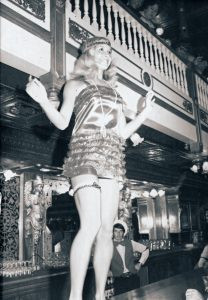 Employee at Church Street Station, embodying the outgoing and spectacular staff that defined the experience
Employee at Church Street Station, embodying the outgoing and spectacular staff that defined the experience
Legacy and Lasting Impact on Downtown Orlando
Bob Snow’s impact extended beyond Church Street Station itself. He actively worked to enhance downtown Orlando, improving the streetscape with the hexagonal pavers that are still visible today. He advocated for mounted police officers, even providing the city’s first police horse and a watering trough. Church Street Station became a magnet for celebrities; Bob Hope celebrated four birthdays at Rosie’s, and stars like Martha Stewart utilized Snow’s personal train car as guest accommodations.
In 1990, Snow sold Church Street Station to Constellation Holdings to pursue a similar venture in Las Vegas. The final Dixieland performance at Rosie O’Grady’s in Orlando took place in 2001, and the building now houses a restaurant. Reflecting on Church Street Station’s golden era in the 1980s, Snow recalled, “When we were goin’ and blowin’… it had such a reputation.” Lili Marlene’s, he noted, was “the top-grossing restaurant in the state until Hard Rock.” A tinge of sadness entered his voice as he admitted, “The hardest part was seeing it dismantled.”
Today, downtown Orlando is a thriving cultural center, bustling with nightlife and major sporting events. Bob Snow, the visionary who saw potential in a neglected area and transformed it into an entertainment destination, concluded our conversation with a poignant observation: “There’ll never be another Church Street Station.” His creation remains a landmark legacy, forever intertwined with the revitalization of downtown Orlando.
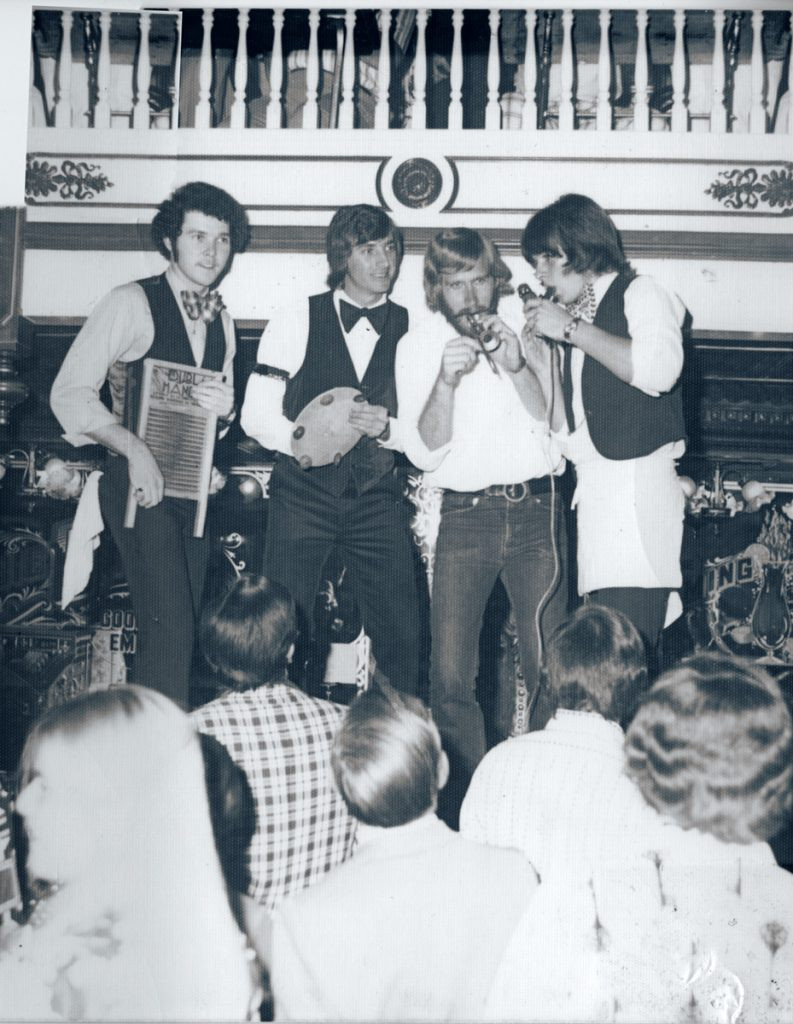 Dixieland band members performing with energy and passion at Church Street Station
Dixieland band members performing with energy and passion at Church Street Station
Article inspired by Rick Kilby from Reflections magazine, Summer 2016.

